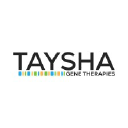Companies
Discover all trending biotech companies
Discover all trending biotech companies

Company Research Platform
Annual Revenue
$ 8,330,000
Global Employees
112
R&D Investment
15600000
This segment focuses on the development of TSHA-101, a gene therapy designed to treat GM2 gangliosidosis, a rare and devastating genetic disorder affecting the central nervous system. Research and development efforts are directed towards optimizing AAV delivery to the brain and spinal cord, enhancing transgene expression, and minimizing potential immune responses. The therapeutic approach involves delivering a functional copy of the HEXA or HEXB gene to restore enzyme activity and prevent the accumulation of toxic gangliosides. Clinical trials are underway to assess the safety and efficacy of TSHA-101 in patients with infantile and juvenile forms of GM2 gangliosidosis. The goal is to provide a potentially curative treatment option that can halt disease progression and improve neurological outcomes for affected individuals. Partnerships with leading research institutions and patient advocacy groups are crucial for advancing this program.
This segment is dedicated to the development of TSHA-118, a gene therapy targeting CLN1 disease, a form of Batten disease characterized by progressive neurological decline. The research and development strategy involves utilizing AAV vectors to deliver a functional copy of the CLN1 gene to cells in the brain, thereby restoring the production of palmitoyl-protein thioesterase 1 (PPT1) enzyme. Preclinical studies are focused on optimizing vector design, enhancing transduction efficiency, and evaluating long-term safety and efficacy. Clinical trials are planned to assess the potential of TSHA-118 to slow or halt disease progression, improve motor function, and extend survival in children with CLN1 disease. Collaboration with patient organizations and academic centers is essential for patient identification, clinical trial design, and data collection. The ultimate aim is to provide a transformative therapy that can significantly improve the quality of life for patients and families affected by CLN1 disease.
This segment is focused on the development of TSHA-102, a gene therapy for Rett syndrome, a neurodevelopmental disorder primarily affecting females. The therapeutic approach involves delivering a functional MECP2 gene using an AAV vector. A key innovation is the use of a miRNA-Responsive Auto-Regulatory Element (miRARE) technology to regulate MECP2 expression and prevent overexpression-related toxicities. Research and development efforts are directed towards optimizing vector design, enhancing gene delivery to the brain, and ensuring precise regulation of MECP2 expression. Clinical trials are underway to evaluate the safety and efficacy of TSHA-102 in adolescent and adult females with Rett syndrome. The goal is to improve neurological function, reduce disease severity, and enhance the overall quality of life for affected individuals. Partnerships with Rett syndrome foundations and research institutions are crucial for advancing this program and addressing the unmet medical needs of this patient population.